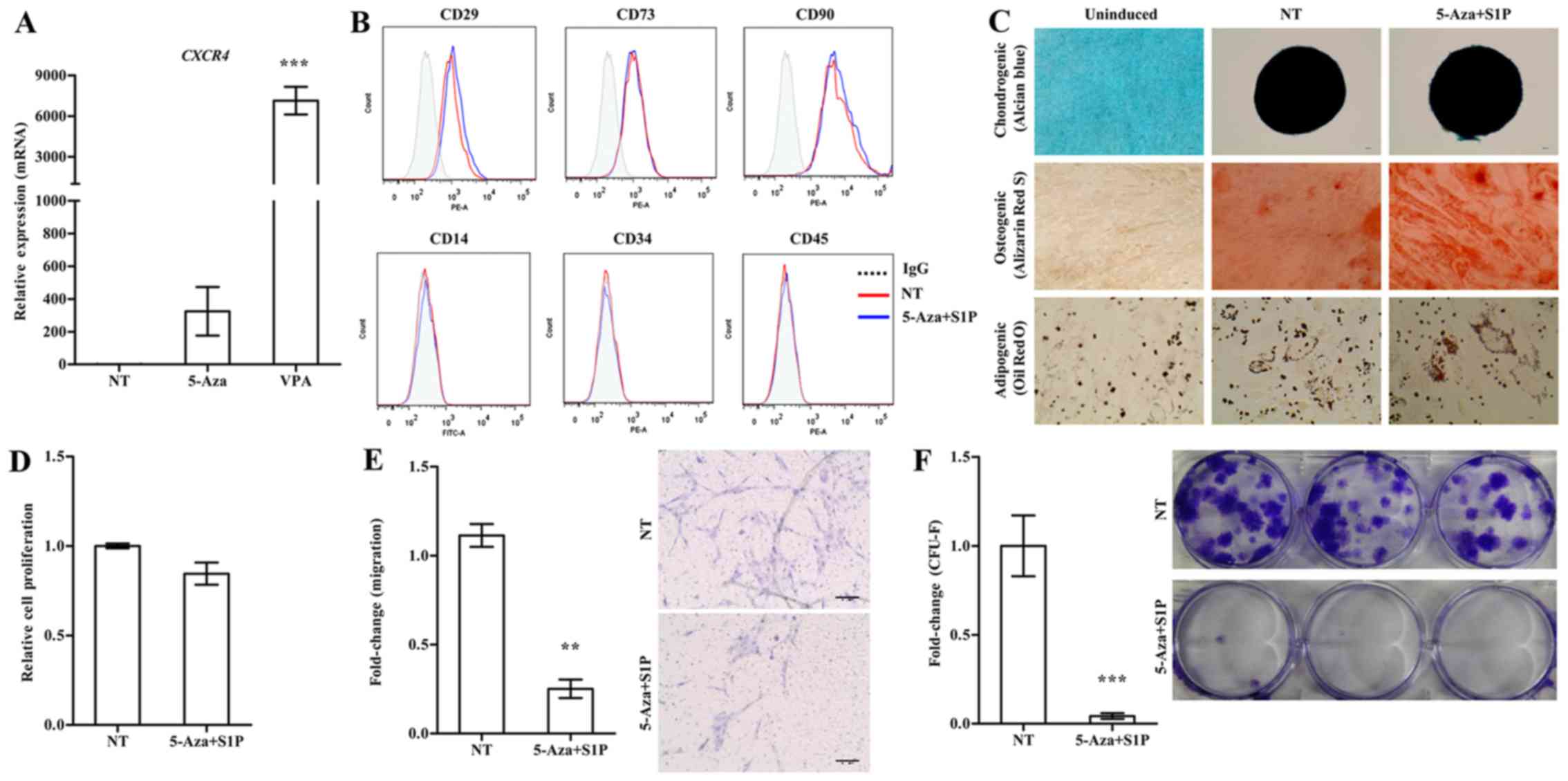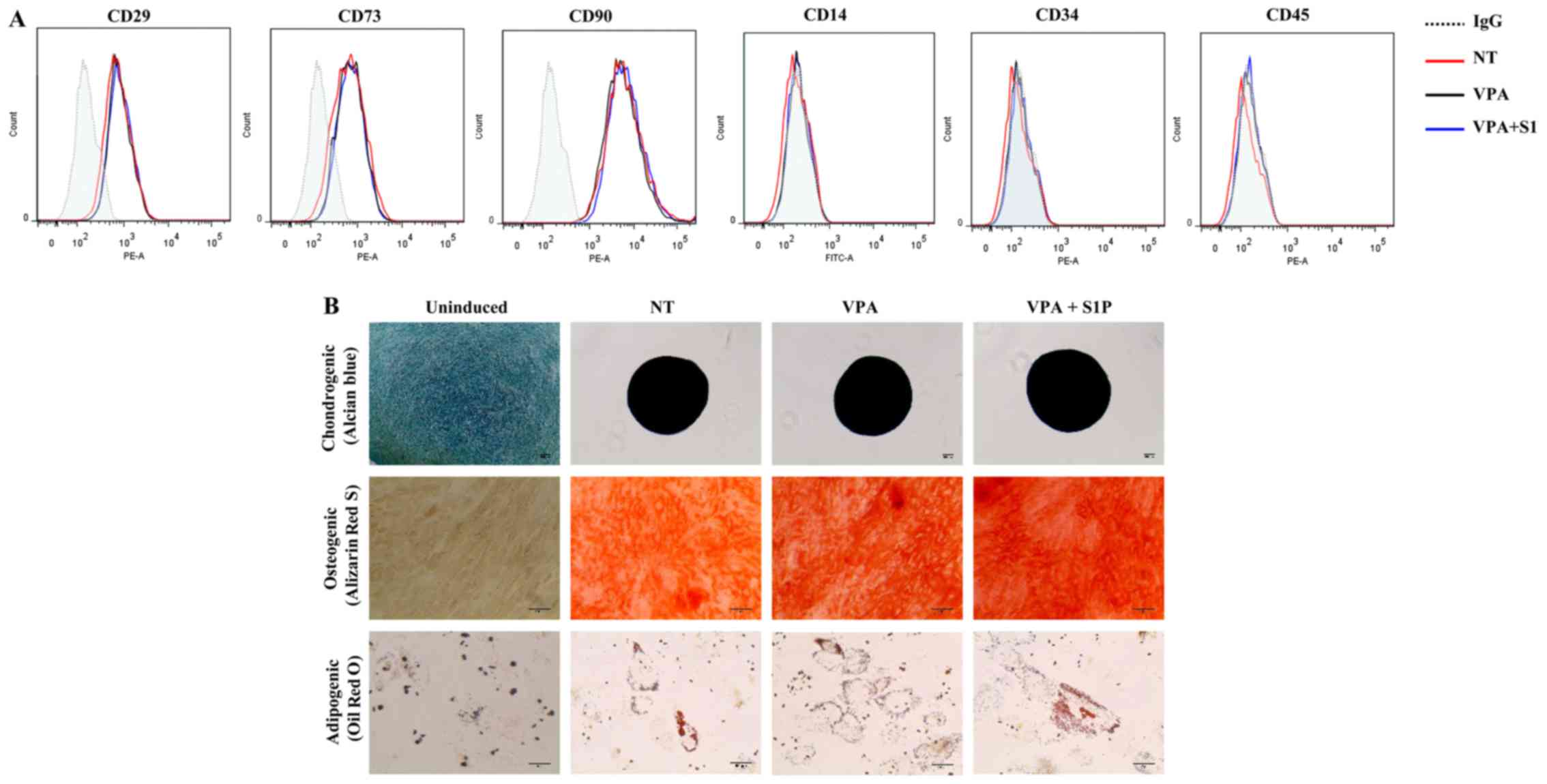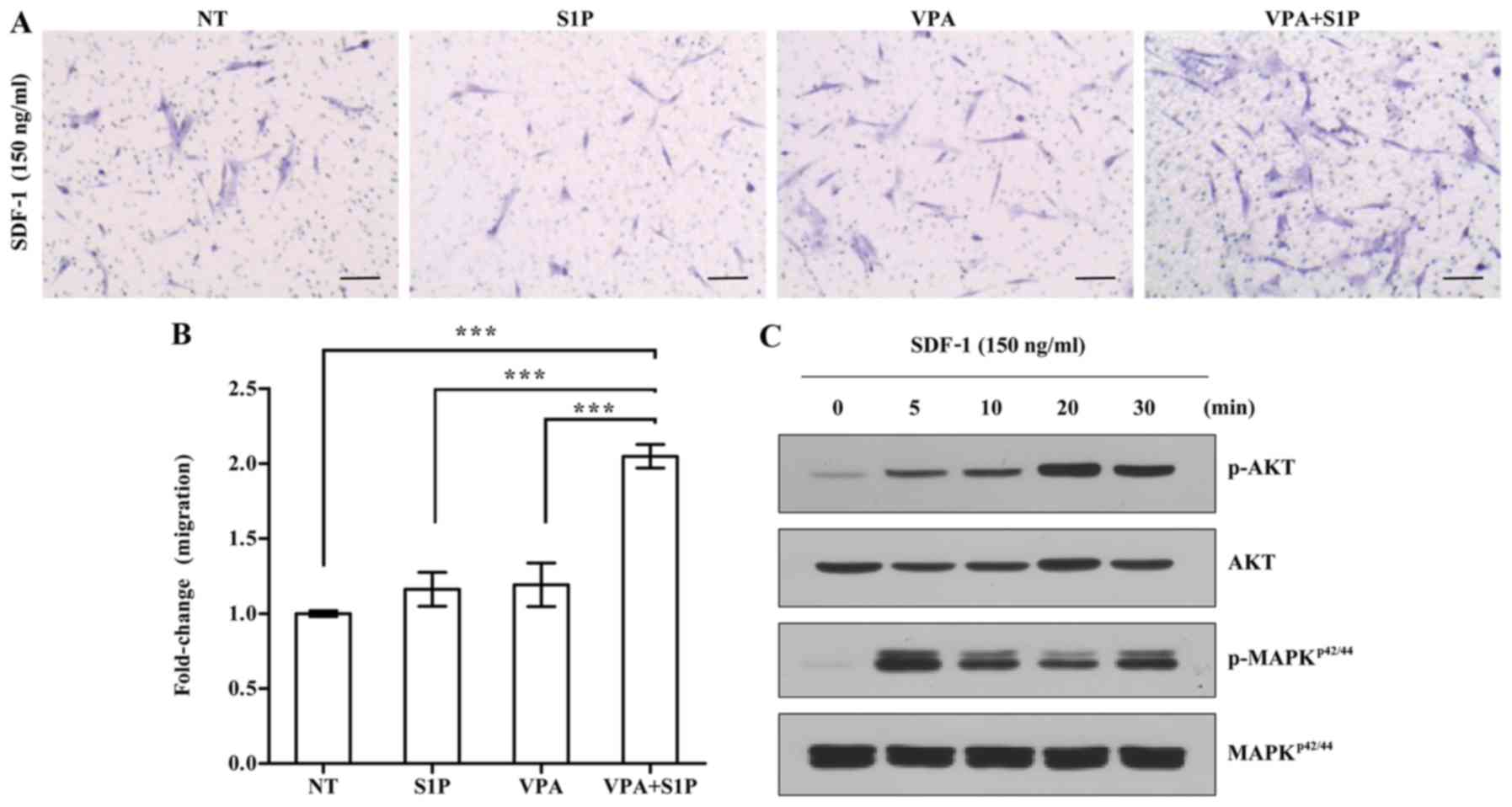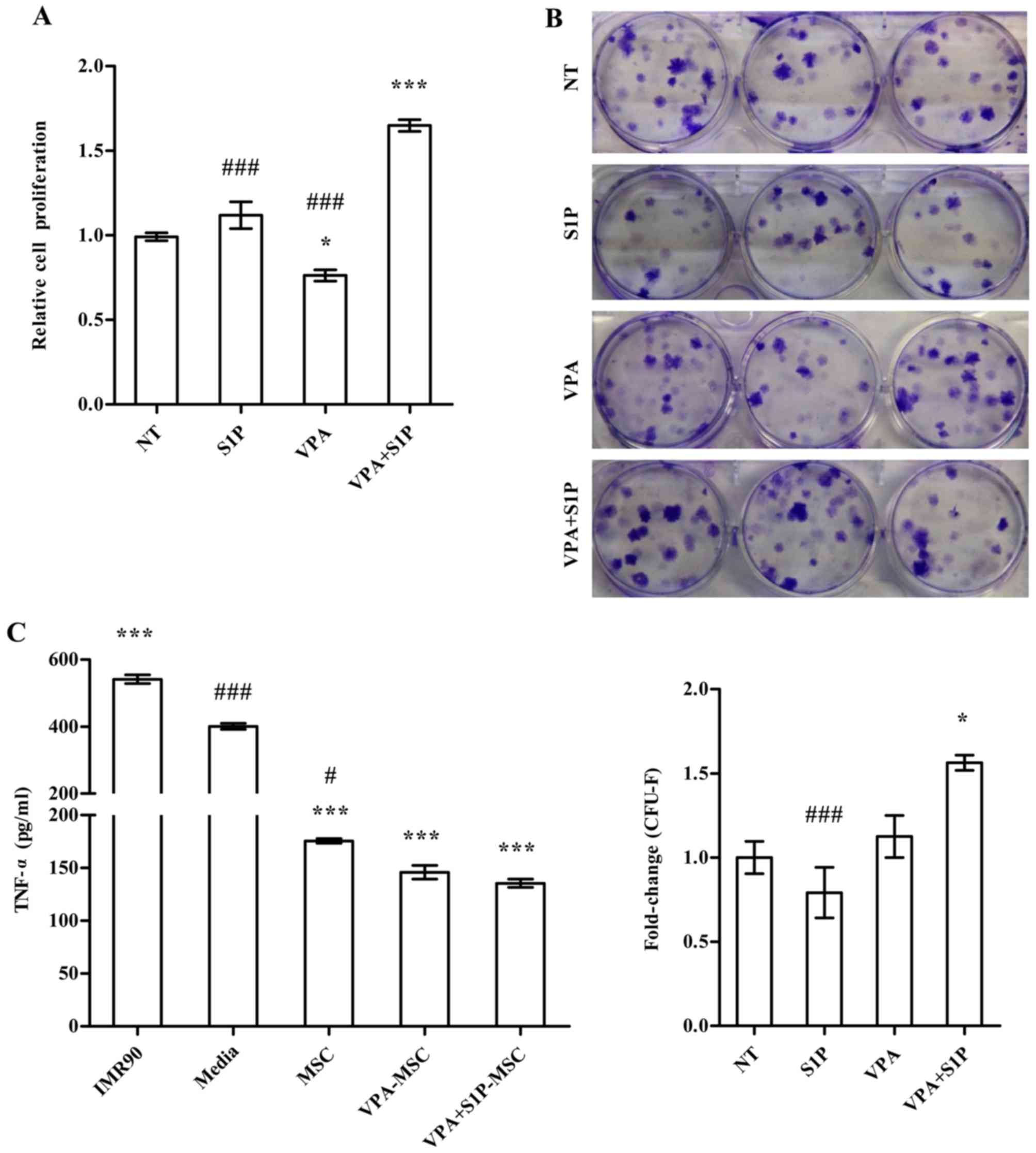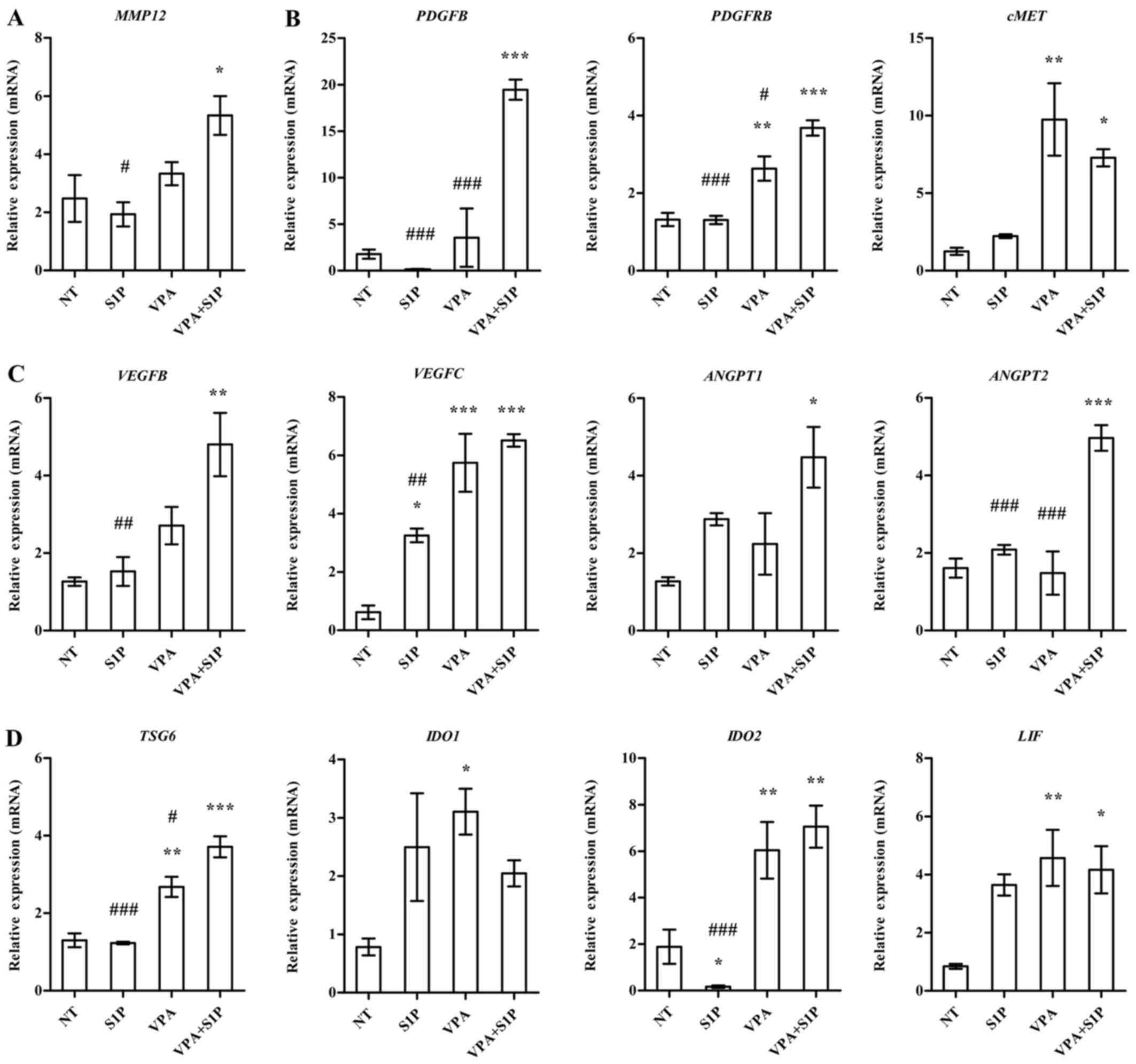|
1
|
Knaän-Shanzer S: Concise review: The
immune status of mesenchymal stem cells and its relevance for
therapeutic application. Stem Cells. 32:603–608. 2014. View Article : Google Scholar
|
|
2
|
Bianco P, Cao X, Frenette PS, Mao JJ,
Robey PG, Simmons PJ and Wang CY: The meaning, the sense and the
significance: Translating the science of mesenchymal stem cells
into medicine. Nat Med. 19:35–42. 2013. View Article : Google Scholar : PubMed/NCBI
|
|
3
|
Kang H, Kim K-H, Lim J, Kim YS, Heo J,
Choi J, Jeong J, Kim Y, Kim SW, Oh YM, et al: The therapeutic
effects of human mesenchymal stem cells primed with sphingosine-1
phosphate on pulmonary artery hypertension. Stem Cells Dev.
24:1658–1671. 2015. View Article : Google Scholar : PubMed/NCBI
|
|
4
|
Jin HJ, Lee HJ, Heo J, Lim J, Kim M, Kim
MK, Nam HY, Hong GH, Cho YS, Choi SJ, et al: Senescence associated
MCP-1 secretion is dependent on a decline in BMI1 in human
mesenchymal stromal cells. Antioxid Redox Signal. 24:471–485. 2015.
View Article : Google Scholar
|
|
5
|
Connick P, Kolappan M, Crawley C, Webber
DJ, Patani R, Michell AW, Du MQ, Luan SL, Altmann DR, Thompson AJ,
et al: Autologous mesenchymal stem cells for the treatment of
secondary progressive multiple sclerosis: An open-label phase 2a
proof-of-concept study. Lancet Neurol. 11:150–156. 2012. View Article : Google Scholar : PubMed/NCBI
|
|
6
|
Wang D, Li J, Zhang Y, Zhang M, Chen J, Li
X, Hu X, Jiang S, Shi S and Sun L: Umbilical cord mesenchymal stem
cell transplantation in active and refractory systemic lupus
erythematosus: A multicenter clinical study. Arthritis Res Ther.
16:R792014. View
Article : Google Scholar : PubMed/NCBI
|
|
7
|
Song M, Lim J, Yu HY, Park J, Chun JY,
Jeong J, Heo J, Kang H, Kim Y, Cho YM, et al: Mesenchymal stem cell
therapyalleviates interstitial cystitis by activating Wnt signaling
pathway. Stem Cells Dev. 24:1648–1657. 2015. View Article : Google Scholar : PubMed/NCBI
|
|
8
|
Kim A, Yu HY, Heo J, Song M, Shin JH, Lim
J, Yoon SJ, Kim Y, Lee S, Kim SW, et al: Mesenchymal stem cells
protect against the tissue fibrosis of ketamine-induced cystitis in
rat bladder. Sci Rep. 6:308812016. View Article : Google Scholar : PubMed/NCBI
|
|
9
|
Song M, Heo J, Chun JY, Bae HS, Kang JW,
Kang H, Cho YM, Kim SW, Shin DM and Choo MS: The paracrine effects
of mesenchymal stem cells stimulate the regeneration capacity of
endogenous stem cells in the repair of a
bladder-outlet-obstruction-induced overactive bladder. Stem Cells
Dev. 23:654–663. 2014. View Article : Google Scholar
|
|
10
|
Gnecchi M, Zhang Z, Ni A and Dzau VJ:
Paracrine mechanisms in adult stem cell signaling and therapy. Circ
Res. 103:1204–1219. 2008. View Article : Google Scholar : PubMed/NCBI
|
|
11
|
Gnecchi M, He H, Noiseux N, Liang OD,
Zhang L, Morello F, Mu H, Melo LG, Pratt RE, Ingwall JS, et al:
Evidence supporting paracrine hypothesis for Akt-modified
mesenchymal stem cell-mediated cardiac protection and functional
improvement. FASEB J. 20:661–669. 2006. View Article : Google Scholar : PubMed/NCBI
|
|
12
|
Vaquero J, Zurita M, Oya S and Santos M:
Cell therapy using bone marrow stromal cells in chronic paraplegic
rats: Systemic or local administration? Neurosci Lett. 398:129–134.
2006. View Article : Google Scholar : PubMed/NCBI
|
|
13
|
Lee RH, Pulin AA, Seo MJ, Kota DJ,
Ylostalo J, Larson BL, Semprun-Prieto L, Delafontaine P and Prockop
DJ: Intravenous hMSCs improve myocardial infarction in mice because
cells embolized in lung are activated to secrete the
anti-inflammatory protein TSG-6. Cell Stem Cell. 5:54–63. 2009.
View Article : Google Scholar : PubMed/NCBI
|
|
14
|
Ratajczak MZ, Zuba-Surma E, Kucia M, Reca
R, Wojakowski W and Ratajczak J: The pleiotropic effects of the
SDF-1CXCR4 axis in organogenesis, regeneration and tumorigenesis.
Leukemia. 20:1915–1924. 2006. View Article : Google Scholar : PubMed/NCBI
|
|
15
|
Tsuzuki Y, Fukumura D, Oosthuyse B, Koike
C, Carmeliet P and Jain RK: Vascular endothelial growth factor
(VEGF) modulation by targeting hypoxia-inducible factor-1alpha→
hypoxia response element→ VEGF cascade differentially regulates
vascular response and growth rate in tumors. Cancer Res.
60:6248–6252. 2000.PubMed/NCBI
|
|
16
|
Morikawa S, Mabuchi Y, Kubota Y, Nagai Y,
Niibe K, Hiratsu E, Suzuki S, Miyauchi-Hara C, Nagoshi N, Sunabori
T, et al: Prospective identification, isolation, and systemic
transplantation of multipotent mesenchymal stem cells in murine
bone marrow. J Exp Med. 206:2483–2496. 2009. View Article : Google Scholar : PubMed/NCBI
|
|
17
|
Corpechot C, Barbu V, Wendum D, Chignard
N, Housset C, Poupon R and Rosmorduc O: Hepatocyte growth factor
and c-Met inhibition by hepatic cell hypoxia: A potential mechanism
for liver regeneration failure in experimental cirrhosis. Am J
Pathol. 160:613–620. 2002. View Article : Google Scholar : PubMed/NCBI
|
|
18
|
Kucia M, Zhang YP, Reca R, Wysoczynski M,
Machalinski B, Majka M, Ildstad ST, Ratajczak J, Shields CB and
Ratajczak MZ: Cells enriched in markers of neural tissue-committed
stem cells reside in the bone marrow and are mobilized into the
peripheral blood following stroke. Leukemia. 20:18–28. 2006.
View Article : Google Scholar
|
|
19
|
Li J, Guo W, Xiong M, Han H, Chen J, Mao
D, Tang B, Yu H and Zeng Y: Effect of SDF-1/CXCR4 axis on the
migration of transplanted bone mesenchymal stem cells mobilized by
erythropoietin toward lesion sites following spinal cord injury.
Int J Mol Med. 36:1205–1214. 2015.PubMed/NCBI
|
|
20
|
Ratajczak MZ, Lee H, Wysoczynski M, Wan W,
Marlicz W, Laughlin MJ, Kucia M, Janowska-Wieczorek A and Ratajczak
J: Novel insight into stem cell mobilization-plasma
sphingosine-1-phosphate is a major chemoattractant that directs the
egress of hematopoietic stem progenitor cells from the bone marrow
and its level in peripheral blood increases during mobilization due
to activation of complement cascade/membrane attack complex.
Leukemia. 24:976–985. 2010. View Article : Google Scholar : PubMed/NCBI
|
|
21
|
Kim CH, Wu W, Wysoczynski M, Abdel-Latif
A, Sunkara M, Morris A, Kucia M, Ratajczak J and Ratajczak MZ:
Conditioning for hematopoietic transplantation activates the
complement cascade and induces a proteolytic environment in bone
marrow: A novel role for bioactive lipids and soluble C5b-C9 as
homing factors. Leukemia. 26:106–116. 2012. View Article : Google Scholar
|
|
22
|
Kim C, Schneider G, Abdel-Latif A,
Mierzejewska K, Sunkara M, Borkowska S, Ratajczak J, Morris AJ,
Kucia M and Ratajczak MZ: Ceramide-1-phosphate regulates migration
of multipotent stromal cells and endothelial progenitor
cells–implications for tissue regeneration. Stem Cells. 31:500–510.
2013. View Article : Google Scholar :
|
|
23
|
Lim J, Kim Y, Heo J, Kim KH, Lee S, Lee
SW, Kim K, Kim IG and Shin DM: Priming with ceramide-1 phosphate
promotes the therapeutic effect of mesenchymal stem/stromal cells
on pulmonary artery hypertension. Biochem Biophys Res Commun.
473:35–41. 2016. View Article : Google Scholar : PubMed/NCBI
|
|
24
|
Lee S, Kim H-S, Roh K-H, Lee BC, Shin TH,
Yoo JM, Kim YL, Yu KR, Kang KS and Seo KW: DNA methyltransferase
inhibition accelerates the immunomodulation and migration of human
mesenchymal stem cells. Sci Rep. 5:80202015. View Article : Google Scholar : PubMed/NCBI
|
|
25
|
Chen L, Cui X, Wu Z, Jia L, Yu Y, Zhou Q,
Hu X, Xu W, Luo D, Liu J, et al: Transplantation of bone marrow
mesenchymal stem cells pretreated with valproic acid in rats with
an acute spinal cord injury. Biosci Trends. 8:111–119. 2014.
View Article : Google Scholar : PubMed/NCBI
|
|
26
|
Yu KR, Yang SR, Jung JW, Kim H, Ko K, Han
DW, Park SB, Choi SW, Kang SK, Schöler H, et al: CD49f enhances
multi-potency and maintains stemness through the direct regulation
of OCT4 and SOX2. Stem Cells. 30:876–887. 2012. View Article : Google Scholar : PubMed/NCBI
|
|
27
|
Heo J, Lim J, Lee S, Jeong J, Kang H, Kim
Y, Kang JW, Yu HY, Jeong EM, Kim K, et al: Sirt1 regulates DNA
methylation and differentiation potential of embryonic stem cells
by antagonizing Dnmt3l. Cell Rep. 18:1930–1945. 2017. View Article : Google Scholar : PubMed/NCBI
|
|
28
|
Wu W, Kim CH, Liu R, Kucia M, Marlicz W,
Greco N, Ratajczak J, Laughlin MJ and Ratajczak MZ: The bone
marrow-expressed antimicrobial cationic peptide LL-37 enhances the
responsiveness of hematopoietic stem progenitor cells to an SDF-1
gradient and accelerates their engraftment after transplantation.
Leukemia. 26:736–745. 2012. View Article : Google Scholar
|
|
29
|
Lee HM, Wu W, Wysoczynski M, Liu R,
Zuba-Surma EK, Kucia M, Ratajczak J and Ratajczak MZ: Impaired
mobilization of hematopoietic stem/progenitor cells in C5-deficient
mice supports the pivotal involvement of innate immunity in this
process and reveals novel promobilization effects of granulocytes.
Leukemia. 23:2052–2062. 2009. View Article : Google Scholar : PubMed/NCBI
|
|
30
|
Kim N and Cho SG: New strategies for
overcoming limitations of mesenchymal stem cell-based immune
modulation. Int J Stem Cells. 8:54–68. 2015. View Article : Google Scholar : PubMed/NCBI
|
|
31
|
Li D, Han Y, Zhuang Y, Fu J, Liu H, Shi Q
and Ju X: Overexpression of COX-2 but not indoleamine
2,3-dioxygenase-1 enhances the immunosuppressive ability of human
umbilical cord-derived mesenchymal stem cells. Int J Mol Med.
35:1309–1316. 2015.PubMed/NCBI
|
|
32
|
Yang W, Yang Y, Yang JY, Liang M and Song
J: Treatment with bone marrow mesenchymal stem cells combined with
plumbagin alleviates spinal cord injury by affecting oxidative
stress, inflammation, apoptotis and the activation of the Nrf2
pathway. Int J Mol Med. 37:1075–1082. 2016.PubMed/NCBI
|
|
33
|
Jones GN, Moschidou D, Lay K, Abdulrazzak
H, Vanleene M, Shefelbine SJ, Polak J, de Coppi P, Fisk NM and
Guillot PV: Upregulating CXCR4 in human fetal mesenchymal stem
cells enhances engraftment and bone mechanics in a mouse model of
osteogenesis imperfecta. Stem Cells Transl Med. 1:70–78. 2012.
View Article : Google Scholar : PubMed/NCBI
|
|
34
|
Ratajczak MZ, Kim CH, Wojakowski W,
Janowska-Wieczorek A, Kucia M and Ratajczak J: Innate immunity as
orchestrator of stem cell mobilization. Leukemia. 24:1667–1675.
2010. View Article : Google Scholar : PubMed/NCBI
|
|
35
|
Lee S, Park JR, Seo MS, Roh KH, Park SB,
Hwang JW, Sun B, Seo K, Lee YS, Kang SK, et al: Histone deacetylase
inhibitors decrease proliferation potential and multilineage
differentiation capability of human mesenchymal stem cells. Cell
Prolif. 42:711–720. 2009. View Article : Google Scholar : PubMed/NCBI
|
|
36
|
Wagner W, Weidner CI and Lin Q: Do
age-associated DNA methylation changes increase the risk of
malignant transformation? BioEssays. 37:20–24. 2015. View Article : Google Scholar
|















